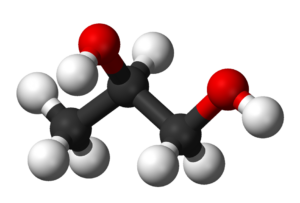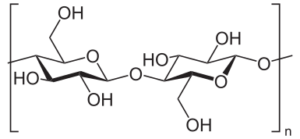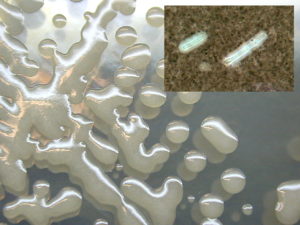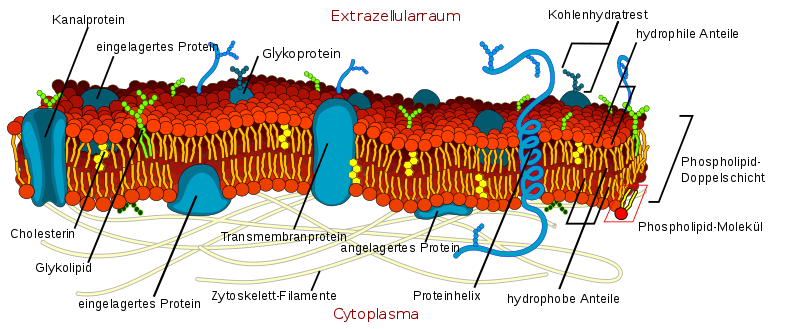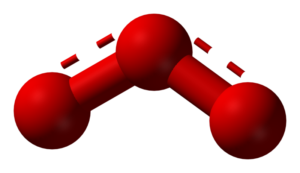Metals in cosmetics - Which ones are suitable?
What are metals?
Metals are a group of elements that share very specific properties. Such are e.g. Their high electrical conductivity and thermal conductivity, their relatively good ductility and metallic sheen[1].
Why are metals like they are?
In contrast to all other elements, metal atoms have no fixed places for electrons. They have a so-called lattice structure in which their nuclei (equipped with protons and neutrons) have fixed places, but their electrons are freely movable (also called delocalized). Electricity is only the movement of the electrons in the material, and their freedom to move determines the conductivity of materials (this is described by the quantum mechanical band model). Likewise, thermal energy is only the movement of particles at a certain interval, which also has to do with the free mobility of the electrons in metals. In addition, these electrons can also emit radiation of any wavelength up to the X-ray radiation, which explains its brilliance[2].
Which metals are suitable for cosmetics?
Suitable metals are all alkali, alkaline earth, and transition metals in question. These are:
Aluminum, beryllium, bismuth, lead, cadmium, chromium, iron, gallium, gold, indium, iridium, potassium, cobalt, calcium, copper, magnesium, manganese, molybdenum, sodium, nickel, osmium, palladium, platinum, mercury, rhodium, Ruthenium, silver, tantalum, titanium, uranium, vanadium, tungsten, zinc, tin and zirconium to name the most important.
You can exclude:
Lead, cadmium, nickel, mercury, beryllium, cobalt and vanadium, as they are toxic, and uranium because it is radioactive.
Also:
Indium, iridium, rhodium, ruthenium, tantalum, palladium and platinum, since these are extremely rare. Gold and silver too, but not so rare
The rest are therefore:
Aluminum, bismuth, chromium, iron, gallium, gold, potassium, copper, magnesium, manganese, molybdenum, sodium, osmium, silver, titanium, tungsten, zinc, tin, potassium, calcium and zirconium.
|
Aluminum(Al) |
Bismuth(Bi) |
Chromium(Cr) |
Iron(Fe) |
Gold |
Potassium (K) |
Magnesium(Mg) |
|
- Third most common metal - Occurs rarely as a pure element -Good conductor -Light metal -Slight toxicity for humans |
-Slightly radioactive -Does occur as a pure element -Bad conductor -Has the strongest "Hall-Effect" |
-Only occurs as a pure element rarely -Chromium3+ is thought to be involved in the metabolism of carbohydrates |
-Very common element -Rarely as a pure element -Essential for humans -Moderately good conductor |
-Quite rare -Occurs mostly as a pure element, as it is quite unreactive -Very soft -Very good conductor -Is used colloidally in medicine |
-Only occurs naturaly as a cation - Doesnt have any significant uses as a pure element -Essential for humans |
-Doesnt occur as a pure element -Is quite lightweight -Essential for humans |
|
Manganese(Mn) |
Molybdenum(Mo) |
Sodium(Na) |
Osmium(Os) |
Silver(Ag) |
Titanium(Ti) |
Wolfram(W) |
|
-Quite common element -Doesnt occur as a pure element -Essential for humans -Acts as a neurotoxin |
-Very hard -Essential for humans |
-Quite common -Doesnt occur as a pure element -Quite lightweight and soft -Essential for humans |
-Very rare element -Occurs naturally because of its unreactivenes -Very expensive -Has the highest density of any element -Doesnt have any industriall use |
-Rare, yet about 20 times more common than gold -The single best conductor -Very soft -Acts antibacterial in colloidal form -Accumulative poison |
-Very common metal -Forms a very resiliant oxide layer |
-Highest melting and boilingpoint of any element -chemically resistant to most things |
|
Zinc(Zn) |
Zink(Sn) |
Calcium(Ca) |
Zirconium(Zr) |
Gallium(Ga) |
Copper (Cu) |
[3] |
|
-Quite common -Unreactive due to an oxide layer -Essential for humans |
-Quite common -Unreactive due to an oxide layer -Non-toxic even in high concentrations |
-Quite soft -Very common element -Essential for humans |
-Quite common -Quite soft -Unreactive due to an oxide layer - Non-toxic even in higher concentrations |
- Quite rare - Doesnt occur as a pure element -Very low melting point - Acts irritating on skin, eyes and respiratory system |
- Quite common element - Acts antibacterial -Second best conductor -Occurs as a pure element |
Now, one must remember that many metals are usually not kept as metals, but are found by environmental influences or their own reactivity as compounds. Accordingly, such compounds are no longer metals and must be excluded. Even oxide layers, thin layers of metal oxide, which surround the metal are excluded, since this oxide layer reduce their intrinsic properties and reactivity. The following are left over: iron, gold, magnesium, molybdenum, osmium, silver, tungsten, copper and chromium.
In addition, these metals are used as powders and not as solid blocks or sticks in cosmetics, and therefore some of these metals precipitate again because they are more reactive in powder form. Thus remain: gold, molybdenum, osmium, silver, tungsten and copper. Already used are gold and silver nanoparticles, where silver has an antibacterial effect and gold is used against mental illness [4]. Molybdenum, has some important functions in the organism, and is therefore essential, but a deficiency is very rare, and almost never occurs, which is why an addition via the skin is unnecessary [5]. Osmium is a precious metal, and in addition to its rarity also to win a lot. There are virtually no applications, except for luxury items such as fountain pens or record player needles [6]. Tungsten is very resistant to environmental influences, and even strong acids and bases are unable to dissolve it [7]. Because of this, tungsten is largely excreted again, and has no physiological effect [8]. Chromium is under discussion to play a role in the carbohydrate utilization of humans, but this has not yet been proven [9]. A metal that is particularly in the eyes of the cosmetics industry, is the copper. It has antibacterial and anti-inflammatory properties, it also promotes collagen and elastin binding in connective tissue, which reduces wrinkles and makes the skin smoother and leveler. In addition, it is intended to help against gray hair by helping to produce color pigments, e.g. in melanin [10].
What is the conclusion?
There are many metals, some were not even discussed. And they have many different properties. Some are essential, and people can not live without them, and others are completely poisonous or deadly. Gold, silver and copper as metals, whether as nanoparticles or not, can really help the body.
Sources:
Wikipedia[1][2][6][7][8][10]
Article on the application of colloidal gold [4]
Article on the application of colloidal silver [4]
Article on some important trace elements [3][5][9]
Bildquellen: Wikimedia Commons, Flickr. Die Bildrechte gehen and die Besitzer der Bilder.


